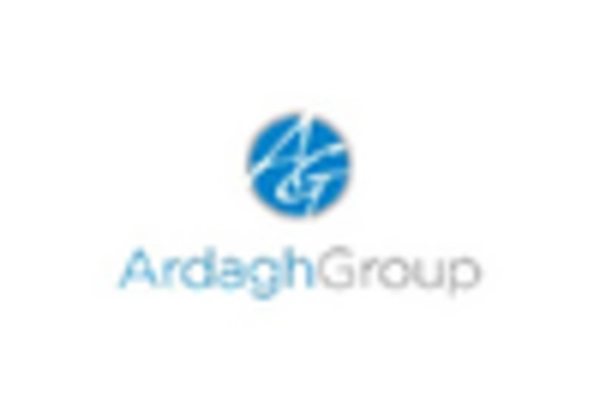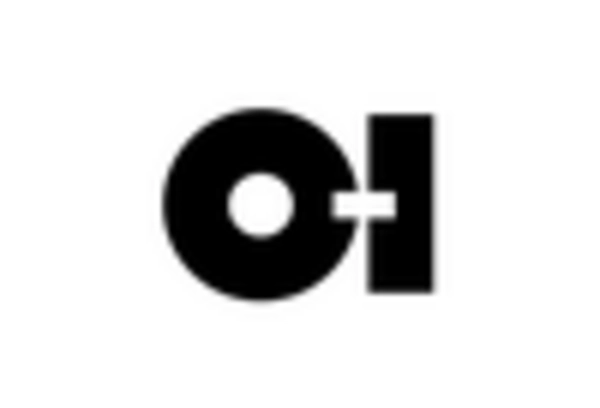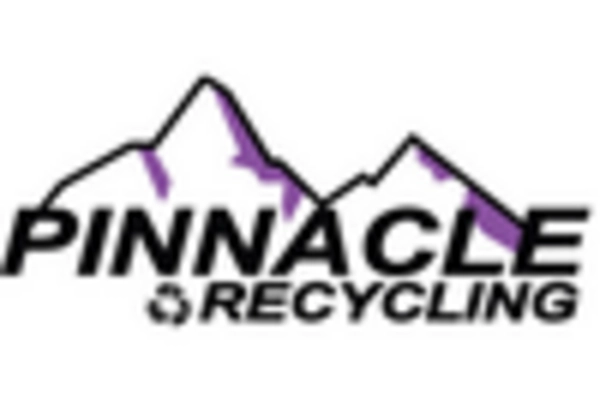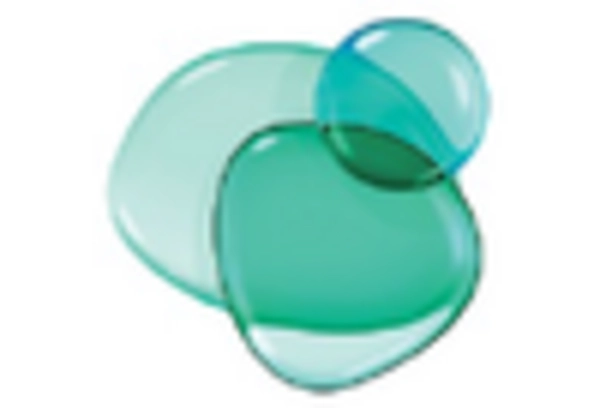Cost-Effectiveness of Recycled Glass
The Recycled Glass Market is witnessing a shift towards cost-effective solutions as manufacturers recognize the economic advantages of using recycled materials. The production of recycled glass is generally less energy-intensive compared to virgin glass, leading to lower operational costs. In 2025, it is estimated that the use of recycled glass could reduce production costs by up to 30%, making it an attractive option for manufacturers. This cost-effectiveness not only enhances profit margins but also encourages more companies to incorporate recycled glass into their products. As a result, the Recycled Glass Market is likely to expand as businesses seek to optimize their supply chains and reduce expenses while adhering to sustainability goals.
Government Regulations and Incentives
The Recycled Glass Market is significantly influenced by government regulations and incentives aimed at promoting recycling and reducing waste. Many governments are implementing stricter regulations on waste management and encouraging the use of recycled materials through financial incentives. In 2025, it is expected that countries will introduce new policies that mandate a certain percentage of recycled content in glass products, further driving demand for recycled glass. These regulatory frameworks not only support the growth of the Recycled Glass Market but also create a more favorable environment for businesses to invest in recycling initiatives, thereby enhancing overall market dynamics.
Innovations in Recycling Technologies
The Recycled Glass Market is benefiting from ongoing innovations in recycling technologies that enhance the efficiency and quality of recycled glass production. Advanced sorting and processing technologies are being developed, which improve the purity of recycled glass and reduce contamination rates. In 2025, it is anticipated that these technological advancements will increase the recycling rate of glass to over 80%, significantly boosting the availability of high-quality recycled glass for various applications. This progress not only supports the growth of the Recycled Glass Market but also aligns with broader sustainability objectives, as higher recycling rates contribute to reduced waste and lower environmental impact.
Rising Awareness of Environmental Issues
The Recycled Glass Market is experiencing growth due to the rising awareness of environmental issues among consumers and businesses alike. As climate change and resource depletion become increasingly pressing concerns, there is a growing emphasis on sustainable practices. In 2025, surveys indicate that over 70% of consumers are willing to pay a premium for products made from recycled materials, including glass. This heightened awareness is prompting companies to adopt more sustainable practices, thereby increasing the demand for recycled glass. The Recycled Glass Market is thus likely to thrive as stakeholders recognize the importance of environmental stewardship and seek to align their operations with consumer expectations.
Increasing Demand for Sustainable Packaging
The Recycled Glass Market is experiencing a notable surge in demand for sustainable packaging solutions. As consumers become more environmentally conscious, companies are increasingly adopting recycled materials to meet these preferences. In 2025, the demand for recycled glass in packaging is projected to reach approximately 20 million tons, reflecting a significant shift towards eco-friendly alternatives. This trend is driven by the need to reduce carbon footprints and enhance brand image. Furthermore, major retailers are implementing policies that favor sustainable packaging, thereby propelling the growth of the recycled glass sector. The Recycled Glass Market is thus positioned to benefit from this growing consumer inclination towards sustainability, which is likely to continue shaping market dynamics in the coming years.

















Leave a Comment